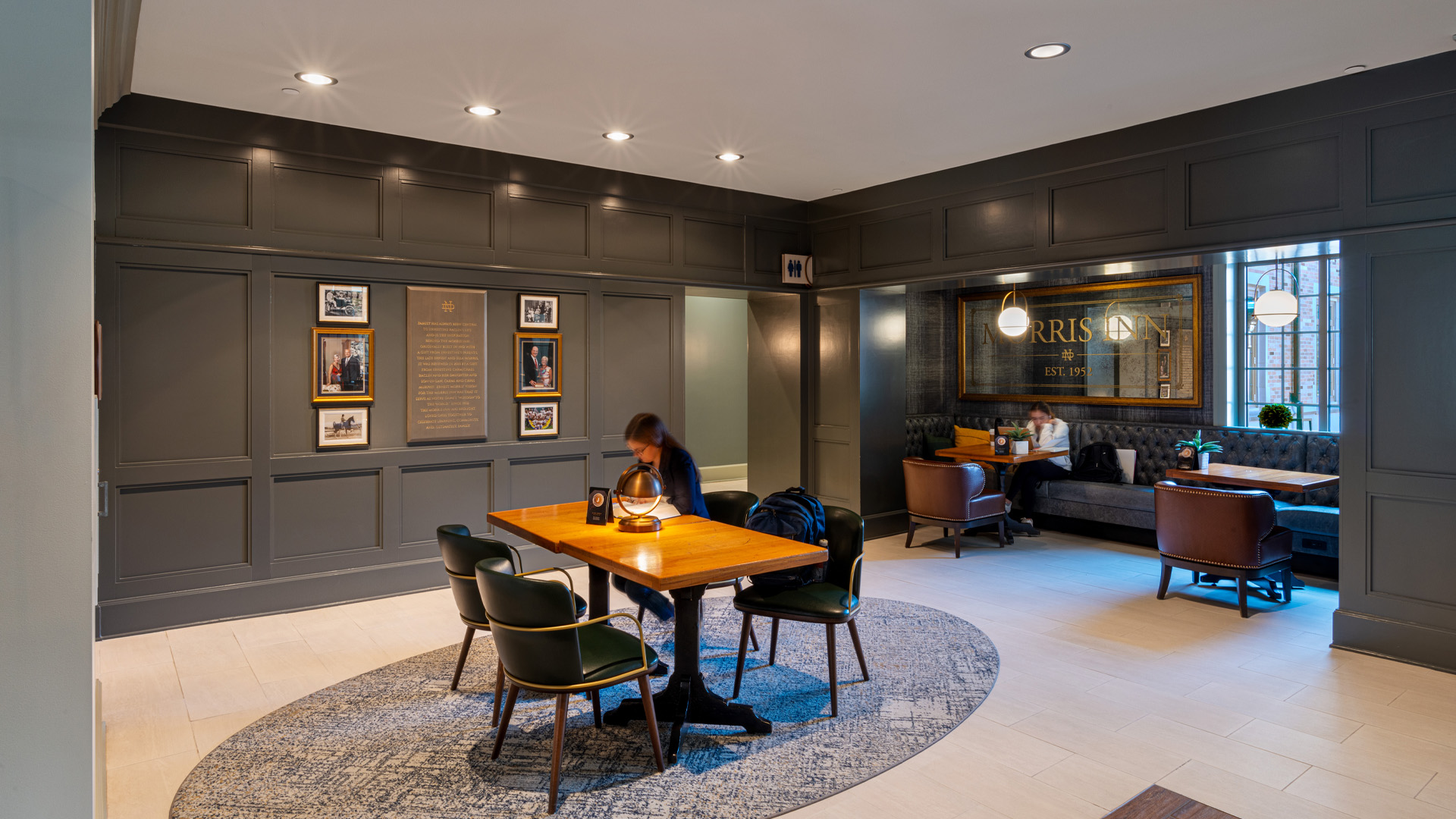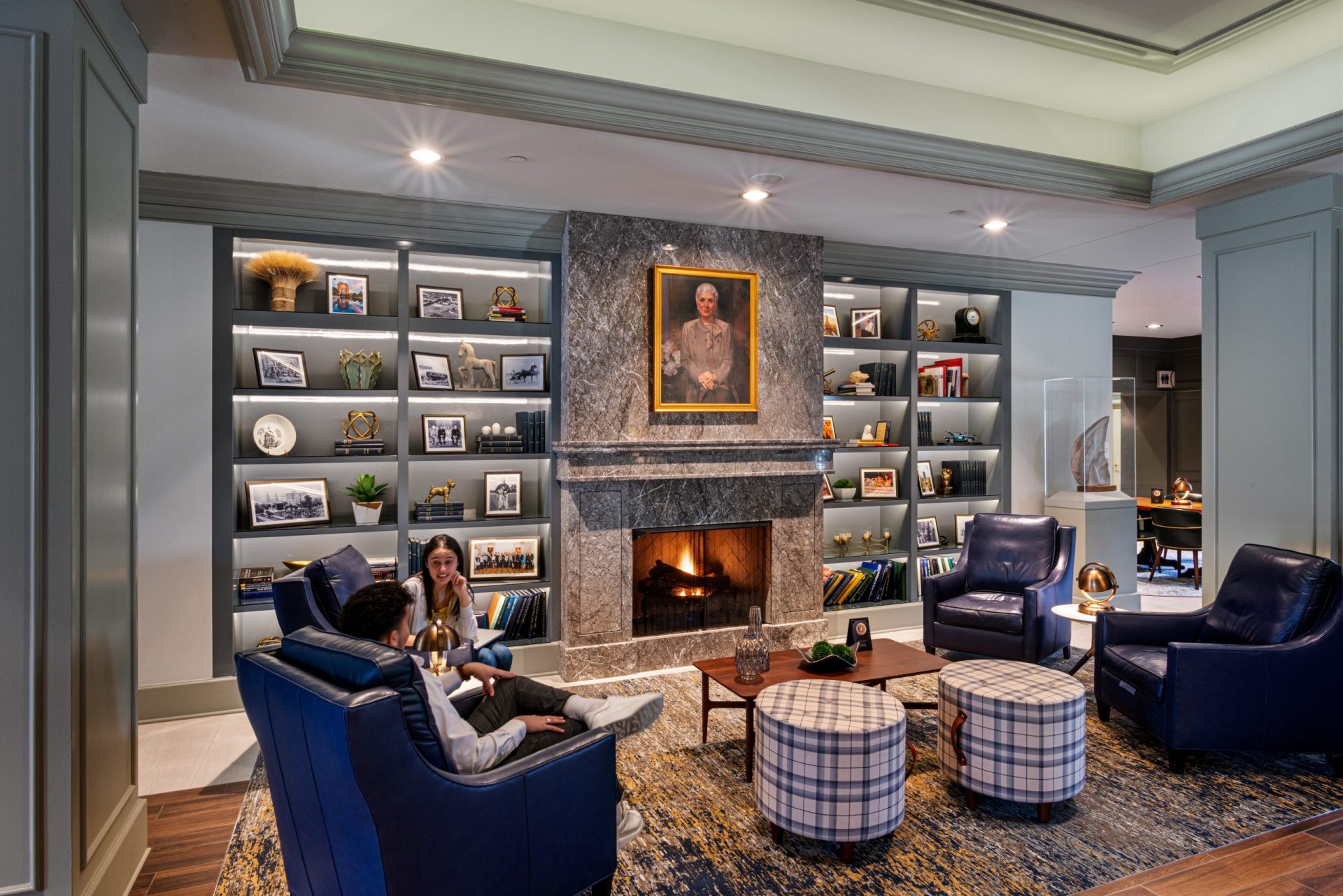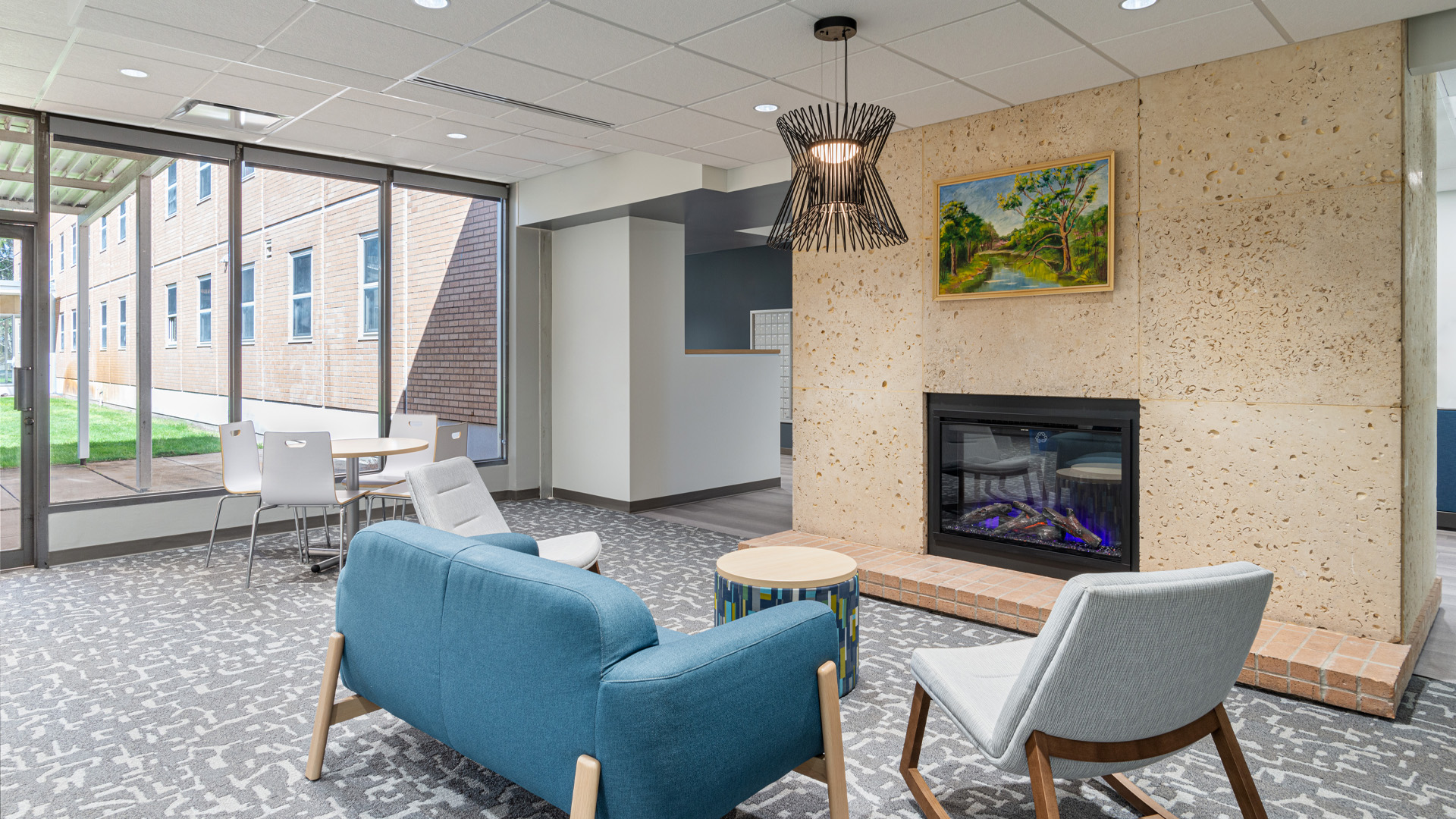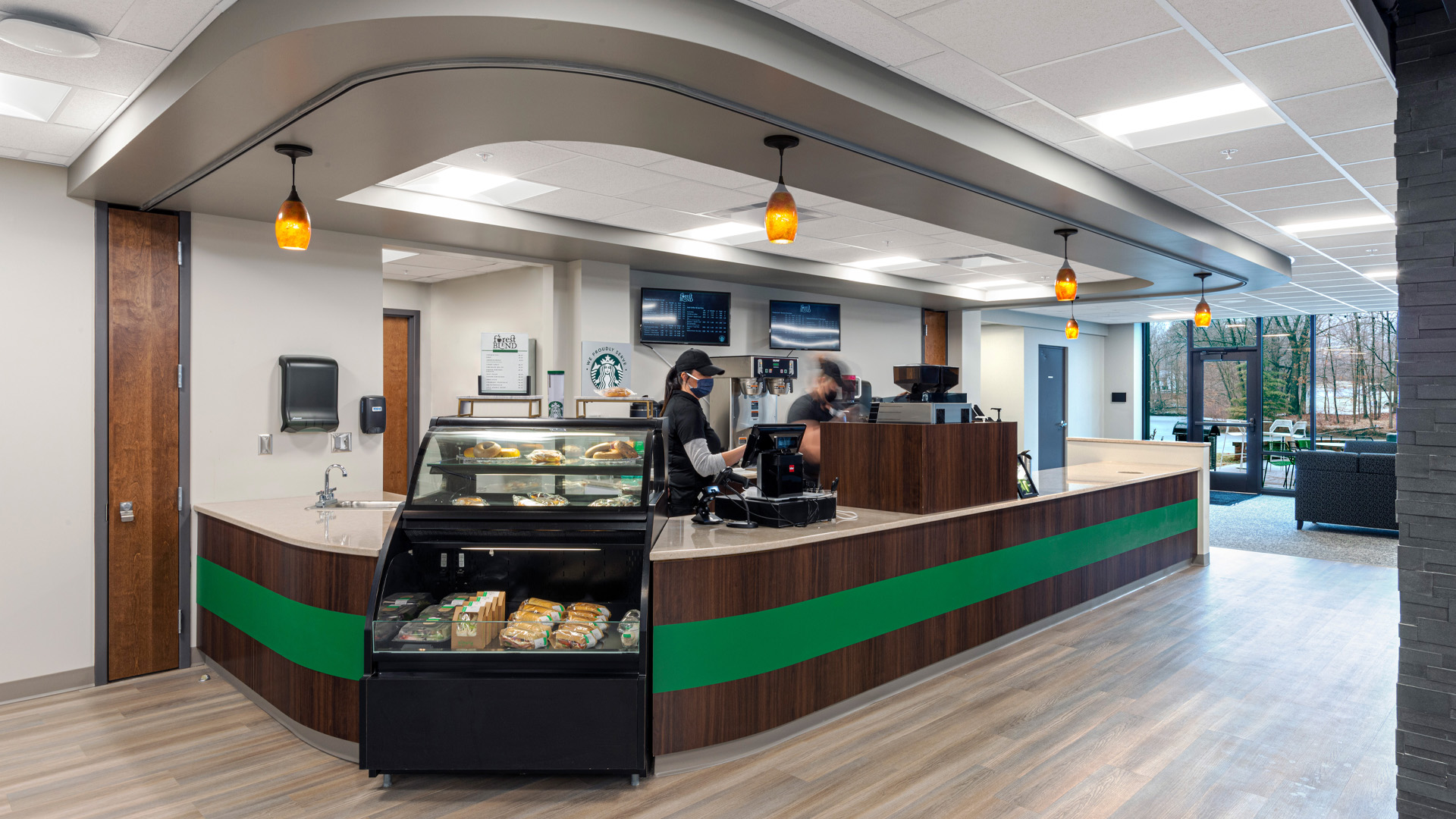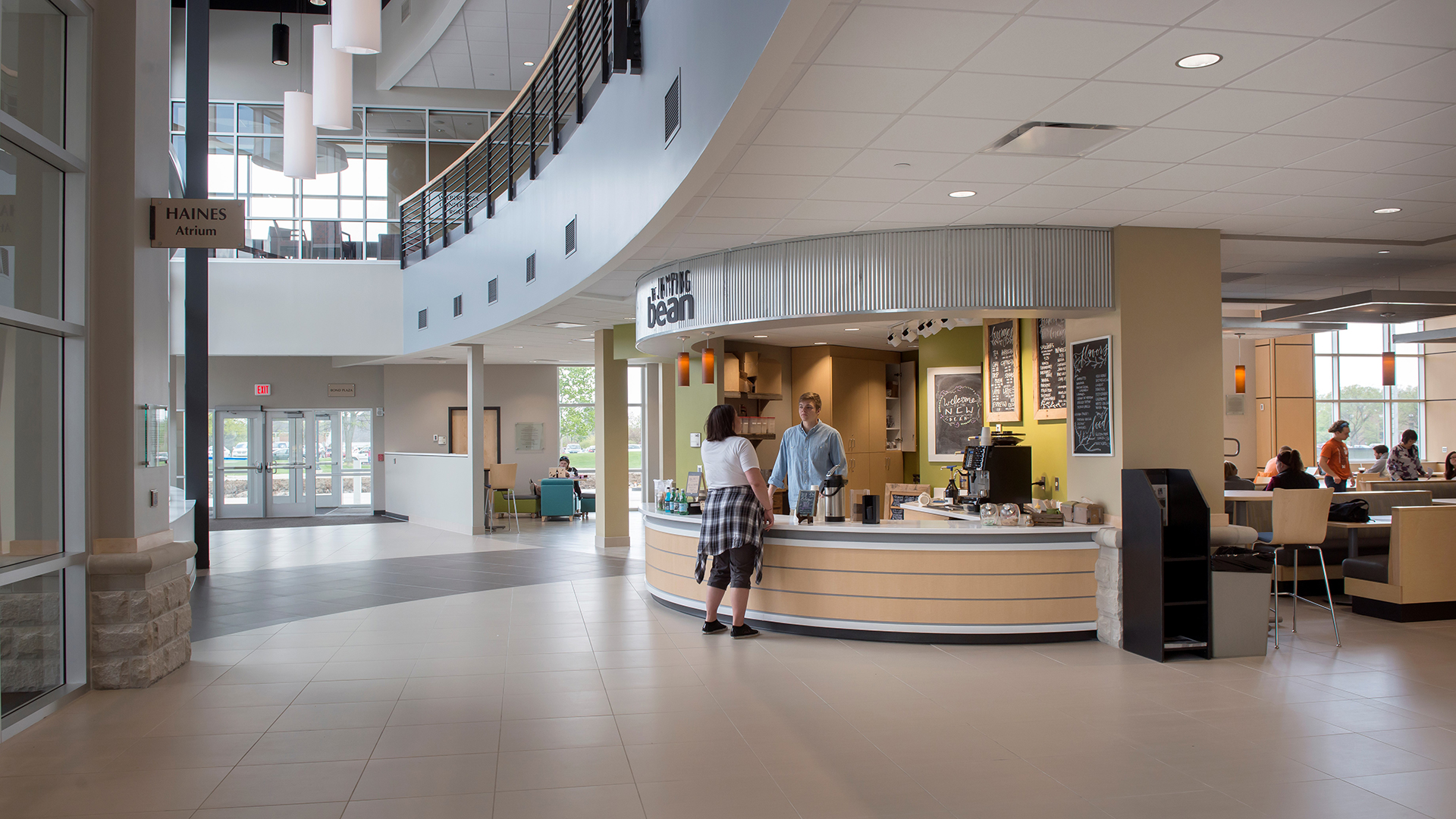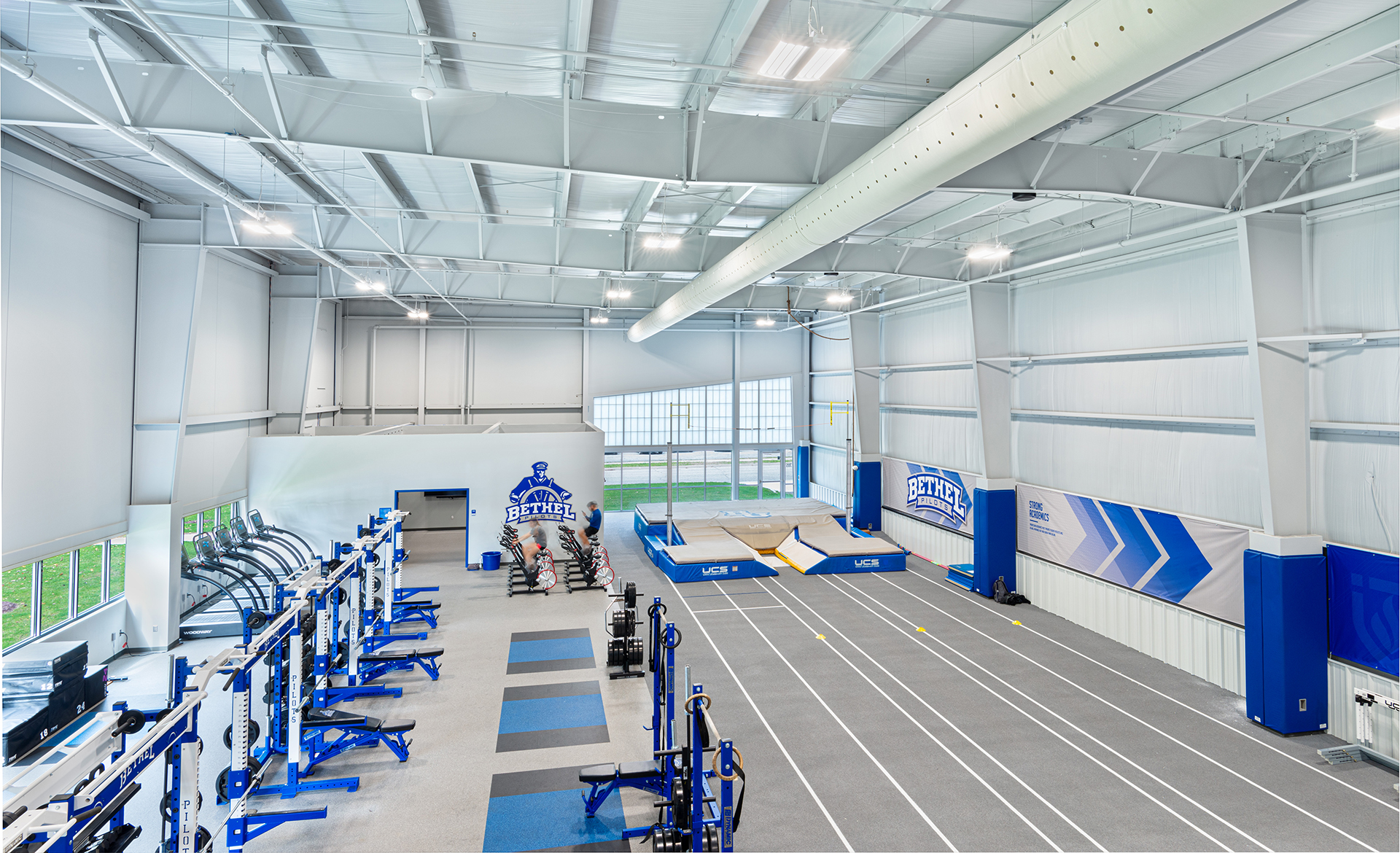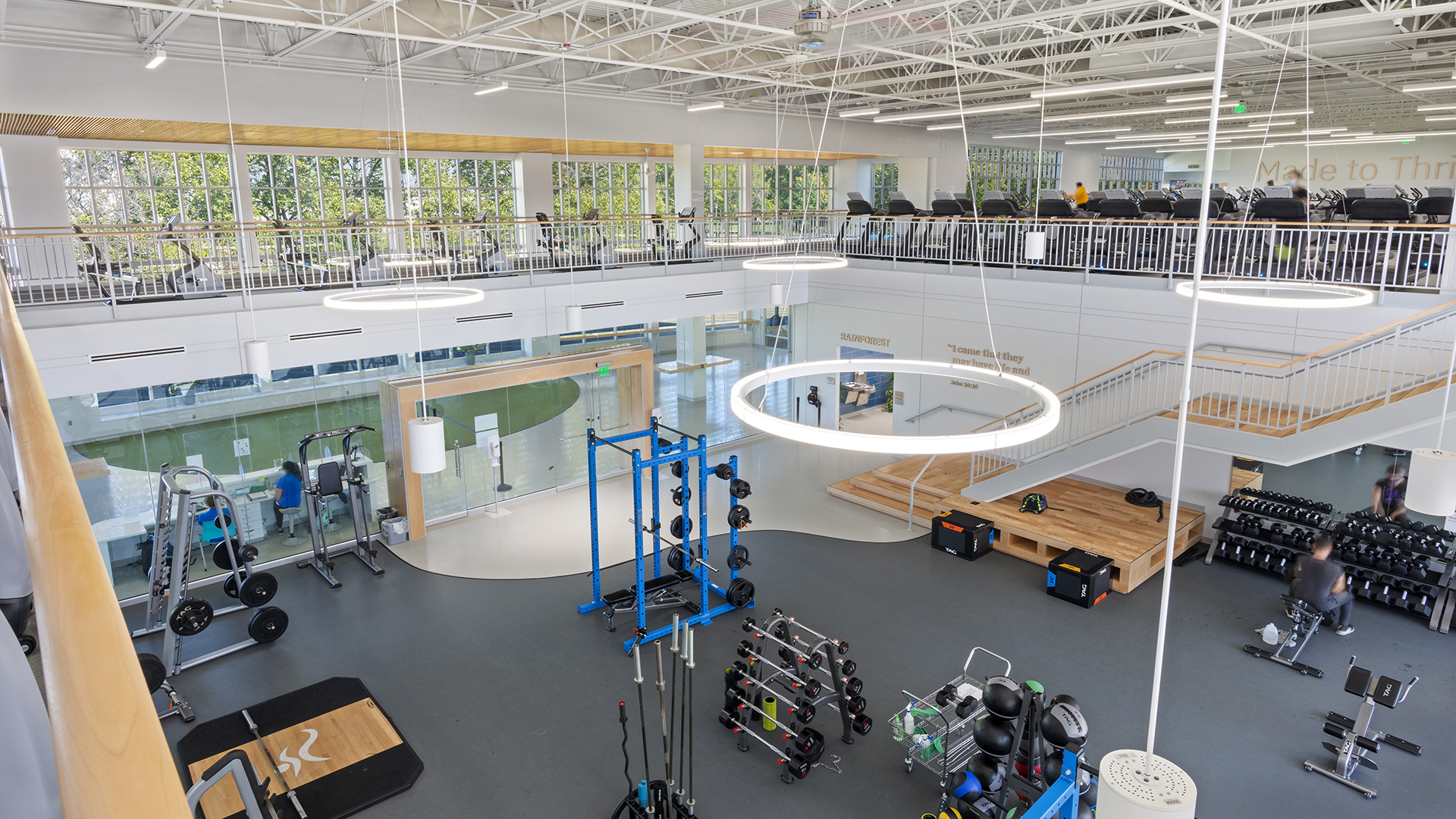The Effects of Education Design on Mental Health
By Nathan Woods, AIA
October 4, 2022Post Tagged in
 |
Your alarm buzzes, alerting you that it’s time for that early morning class. You sit up in bed and stare at the four, bland beige cinderblock walls surrounding you and your roommates. Your roommate switches on the fluorescent light and the room is flooded with a yellowish, flickering glow. Instantly you feel the dread of another school day wash over you. You shuffle down the dark hallway, without seeing a single soul, and make your way to class. Stopping by the café next to your res hall, you grab one of their few menu options – a greasy looking breakfast sandwich, and briefly soak in the sunlight before slinking into the windowless classroom. The grey walls only enhance your gloomy mood, and the dim fluorescent lighting gives you a ‘blah’ feeling. It’s going to be another long Monday…
|
